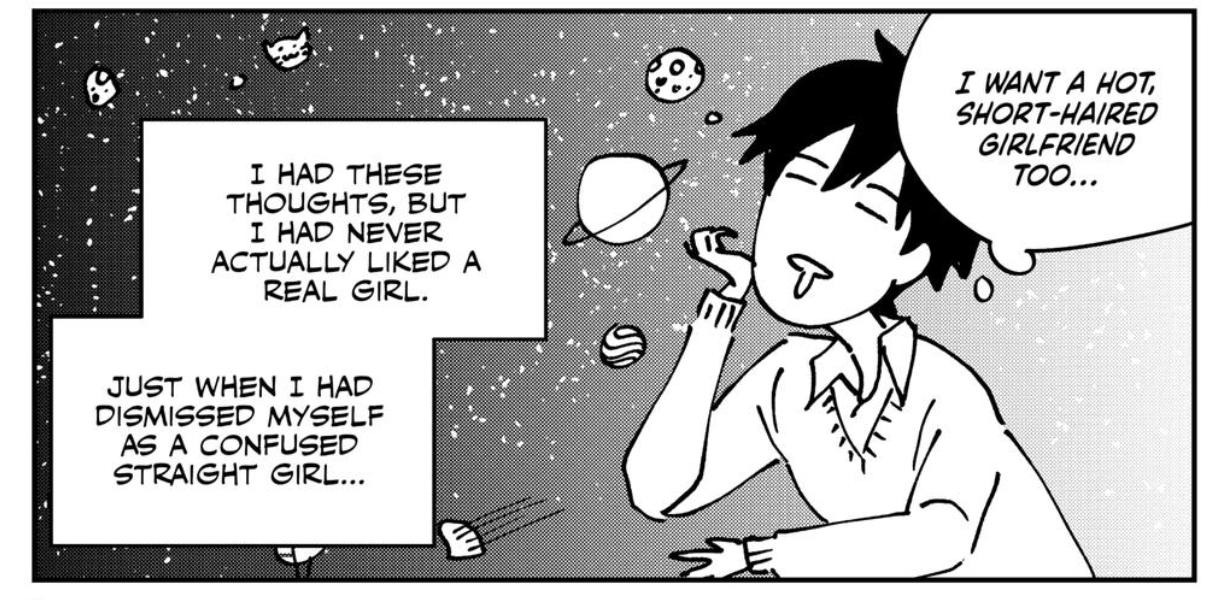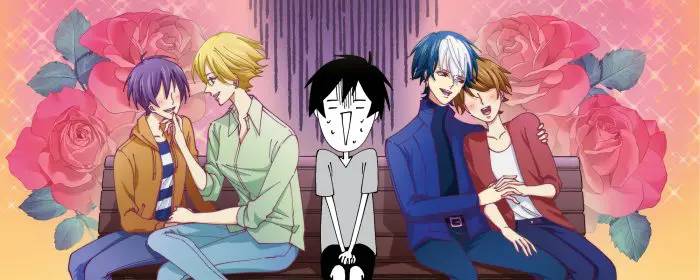When I started Kanojo ga Dekinai Onna (The Girl That Can’t Get a Girlfriend) on ComicK, I expected a simple romance but what I found was a raw, vulnerable memoir that hit like a first heartbreak.
Mieri’s voice is sharp, self-aware, and tinged with hope, pulling me into every moment of doubt, longing, and bittersweet acceptance. If you’ve ever struggled to let go of a first love, this story will strike deep; and if you haven’t, Mieri’s journey is the closest you’ll get to feeling it without breaking your own heart.
A Story That Hits Too Close to Home
What struck me first was how real this story feels. There’s no glossy manga filter here, no overly romanticized narrative. Instead, Mieri invites us into her own life, one awkward, painful, beautiful step at a time. From discovering her attraction to women to fumbling through her first real relationship, it’s all laid bare.
The brilliance is in its relatability. I didn’t just read her story; I remembered my own. That first crush where I was convinced the world revolved around one person. That breakup that lingered like a shadow for years. This manga captures that universal ache so perfectly that at times I had to pause and just sit with my own memories.
For anyone who has ever felt “not enough,” who has loved too hard or held on too long, Mieri’s honesty feels like a hand reaching out from the page saying: “I get it. You’re not alone.”

Mieri’s Struggle with Self Worth
The most painful part of this manga, and the most relatable, is Mieri’s self-image. She constantly places others on pedestals while tearing herself down. I can’t tell you how many times I wanted to shake her and say, “You deserve to be loved without earning it.” But then I remembered the times in my own life where I thought the same way working too hard just to feel “worthy.”
Mieri’s relationship with Ash, her first girlfriend, is where this insecurity really shines through. It’s short-lived, but it consumes her for years. She clings, she sacrifices, she bends herself in ways that are painful to watch, and yet… it’s heartbreakingly real. Because who hasn’t, at some point, mistaken desperation for devotion?
And yet, buried beneath the pain is something profoundly human: the desire to be seen, accepted, loved as we are. Watching Mieri wrestle with that is both excruciating and inspiring because it’s a battle so many of us quietly fight every day.
Ash: The First Love That Haunts
Ash is not a villain. She’s just the girl who happened to be Mieri’s first love. But the way she lingers in the narrative feels almost ghostlike present even when she’s gone, haunting every choice Mieri makes for years.
What I loved is how honestly this manga shows the imbalance in their relationship. Ash wants something Mieri can’t give. Mieri gives everything, only to find that love isn’t enough to hold someone who’s already slipping away. And when Ash moves on, the devastation is palpable. It’s not melodramatic; it’s heartbreak in its purest, most unfiltered form.
I think anyone who’s had a “first” like this knows exactly what it’s like. The way that one person shapes you long after they’ve left. The way you think you’ll never stop measuring yourself against the ghost of what could’ve been. For me, that’s what made this story so powerful it doesn’t shy away from showing how long those scars can linger.
From Rock Bottom to Quiet Healing
What I admired most about this manga is that even in its darkest moments, it refuses to glorify despair. Mieri spirals, yes. She isolates herself, she grieves, she aches. But she doesn’t self-destruct. She doesn’t fall into the abyss. Instead, slowly, painfully, she begins to climb back up.
That climb is messy. It’s not some neat “aha” moment where everything makes sense. It’s learning to be a better friend. Picking up her pen again to draw manga. Choosing, day by day, to build a life worth living not for anyone else, but for herself. That gradual, imperfect healing made me cry more than the heartbreak did, because it felt so much like real life.
In a genre that often glamorizes suffering or forces a tidy resolution, Kanojo ga Dekinai Onna dares to simply be honest. Healing is slow. Love doesn’t always come back. But we endure.

A Style That Speaks Volumes
Let’s talk about the art. It’s deceptively simple, almost plain compared to other flashy manga, but that’s exactly what makes it powerful. The raw, unpolished style mirrors the vulnerability of the story itself. There are no distractions just pure emotion.
Sometimes, a single panel hit harder than pages of dialogue could. A look of loneliness. An empty room. A face turned away. Those little details carried the weight of Mieri’s emotions in a way that words never could.
It reminded me of Nagata Kabi’s autobiographical works, but with a gentler touch. Less self-destruction, more quiet endurance. The art isn’t just telling the story; it’s living it.
Why You Should Read This Manga
If you’ve ever had your heart broken, read this manga. If you’ve ever felt invisible, not enough, or unlovable, read this manga. If you’ve ever wondered if you’d ever truly accept yourself, please read this manga.
Kanojo ga Dekinai Onna isn’t just a story about first love and heartbreak; it’s about resilience, growth, and the messy, ongoing process of learning to love yourself. It’s the kind of manga that lingers long after you close the book, because it makes you reflect on your own scars and maybe even see them differently.
For me, finishing this volume on ComicK wasn’t the end of a story; it was the start of a conversation with myself. A reminder that pain isn’t the whole story, and that healing however slow is still worth chasing. And that’s why I’ll be waiting, heart in hand, for the next installment.
